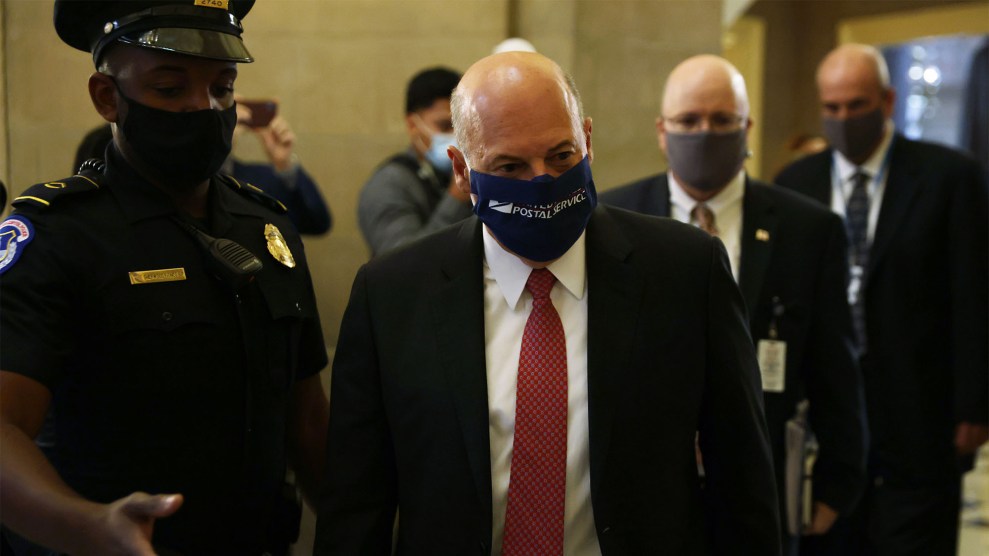
Postmaster General Louis DeJoy arrives at a meeting at the office of Speaker of the House Nancy Pelosi on August 5.Alex Wong/Getty
Embattled Postmaster General Louis DeJoy testified before the US Senate on Friday that he will not reinstall more than 600 mail sorting machines that have been removed under his leadership. Postal workers say the removal of these machines has contributed to major mail delays that could affect whether mail ballots are counted in the 2020 election.
Earlier this week, DeJoy announced that he was halting some planned changes to the USPS until after the election, following public outcry. But he will not reverse steps that he has already taken.
“Will you be bringing back any mail sorting machines that have been removed?” Sen. Gary Peters (D-Mich.) asked DeJoy during a hearing of the Senate Homeland Security & Government Affairs Committee.
“There is no intention to do that,” DeJoy testified. “They are not needed.”
USPS plants were ordered to remove 671 mail sorting machines that can efficiently process thousands of pieces of mail by the end of September. More than 90 percent of the machines have already been removed—and won’t be replaced.
Many of the machines have been removed in critical swing states: 59 in Florida, 58 in Texas, 34 in Ohio, 30 in Pennsylvania, 26 in Michigan, 15 in North Carolina, 12 in Virginia, 12 in Wisconsin, and 11 in Georgia. (This data was provided to Mother Jones by Jacob Bogage and Christopher Ingraham of the Washington Post, who have detailed removal of the machines.)
While some of the removals have been described as routine, many more machines have been removed this year compared to years past. “In 2018, for instance, the agency decommissioned about 3 percent of its Delivery Bar Code Sorters, or 125 machines,” the Post reported. “In 2019, it was 5 percent, or 186 machines. The 671 on this year’s list amounted to about 13 percent.”
President Trump has admitted that he is refusing to fund the USPS because he doesn’t want mail voting to be expanded.
This latest revelation suggests that DeJoy’s announcement that he is reversing efforts to undercut USPS was more about public relations than tangible action—and raises questions about whether USPS will be able to handle a huge increase in mail ballots in November.
Below is a list of all the sorting machines that have been removed:















